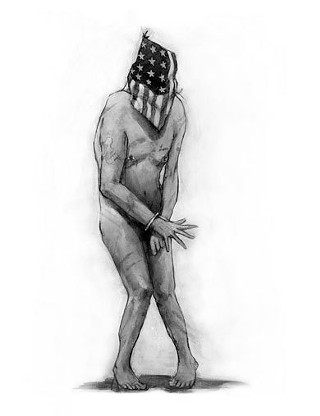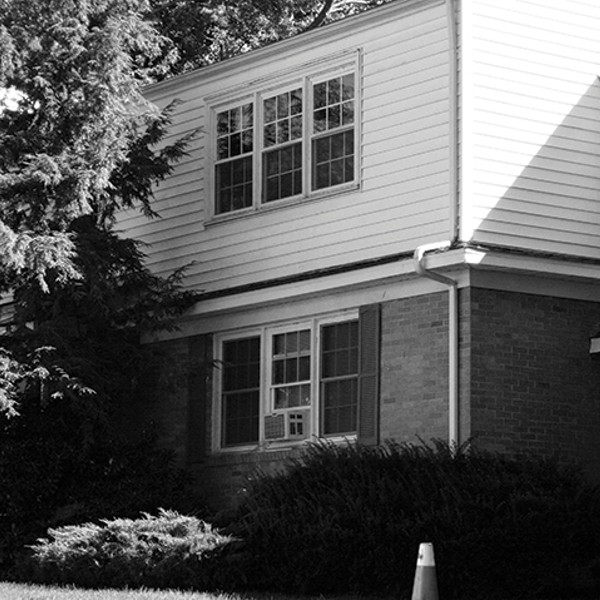Despite the outcry over the abuses committed at Abu Ghraib, neither elected officials nor the public seem particularly worried about similar prisoner mistreatment here in the US by guards who are increasingly beyond the control of prison authorities.
The footage is not easy to watch: In one clip, a prisoner screams as an attack dog mauls his leg; in another, a prisoner with a broken ankle gets zapped in the buttocks with a stun gun because he's not crawling along the floor quickly enough. These aren't the infamous videos from Iraq's Abu Ghraib prison. They were taken in 1996, at the Brazoria County Detention Center outside of Houston. "Welcome to Texas," one guard announces as he literally drags a prisoner across the floor. "Enjoy the ride. It's like Astroworld." Eventually, the tapes ended up on the nightly news, prompting a probe by the FBI, jail sentences for two guards, and a class-action lawsuit that procured, for Texas prisoners, $2.2 million in damages.
The episode was not unusual. Just last month, another videotape of apparent abuse became public; in this one, two inmates at a California youth prison lie seemingly defenseless on the floor while guards assault them, first with fists and later with chemical sprays (the guards claimed they acted in self-defense). And, thanks to a prison population that's growing faster than jail space can accommodate it, the privatization of the prison industry, and a weakening of the laws designed to protect inmates, things only appear to be getting worse. What makes all these trends possible, of course, is vast public indifference: For all the legitimate concern over the abuses in Iraq, neither elected officials nor the public seem particularly worried that similar abuses happen all the time right here at home.
Although protection from cruel and unusual punishment is enshrined in the Bill of Rights, for most of the nation's history, the advocates of fair treatment for prison inmates have fought a lonely and halting battle. In fact, as Harvard University historian Rebecca M. McLennan explains in a forthcoming book, The Crisis of Imprisonment: Protest, Politics, and the Making of the American Penal State, in 1865, it was the Thirteenth Amendment itself - which explicitly exempted prisoners from its prohibition on slavery - that effectively stripped convicted criminals of nearly all rights. At least, that's how the courts interpreted prisoner cases until the 1960s and 1970s, when the Warren Court ruled there was "no iron curtain" between inmates and the Constitution - that some basic human rights existed even behind prison bars. Judges began taking the prisoner lawsuits that their predecessors had refused to hear. It was through the lawsuits this ruling spawned that some of the most egregious prisoner abuses of the last half-century were exposed and, to some extent, remedied. In fact, in many instances, federal judges determined abuses to be so widespread that they effectively took over management of the prisons themselves.
Arguably, the most sweeping - and certainly the most drawn out - of these decrees governed the corrections system in Texas for nearly two decades. The saga began in 1972, when an inmate named David Ruiz scrawled a 30-page complaint about civil rights violations at his facility and passed them to a judge through his attorney. After a marathon trial, Judge William Wayne Justice declared in 1980 that Texas' entire corrections system was unconstitutional. Over the next two decades, Justice would become the de facto chief administrator of Texas prisons, forcing the state to spend billions constructing new prisons and to end the practice of deputizing inmates to guard other inmates - a practice under which these "guards" routinely raped, beat, and tortured their fellow prisoners.
Despite the evidence of chronic abuses in Texas and elsewhere, these judicial decrees proved highly unpopular, particularly when rulings about overcrowding led to the release of "less violent" criminals - many of whom quickly began committing new crimes. As crime rates soared during the '70s and '80s, fueling public frustration with liberal policies that seemed aimed more at protecting criminals than their would-be victims, state officials began lobbying for relief from the close scrutiny of prisons. They finally got it in 1996 after the Republican Congress passed the Prison Litigation Reform Act, curbing both the ability of judges to issue decrees over prison systems and the ability of inmates to bring lawsuits in the first place.
The measure's supporters justified the change by citing the steep financial burden of complying with judicial oversight and some of the seemingly ridiculous demands judges were making along the way. When introducing the bill on the Senate floor, co-sponsor Bob Dole decried certain judicial orders condemning "a defective haircut by a prison barber, the failure of prison officials to invite a prisoner to a pizza party for a departing prison employee, and, yes, being served creamy peanut butter instead of the chunky variety." But, while Dole and his allies had a point, the new law went too far. "It was good for the judges, since they didn't have to deal with all the frivolous lawsuits," says Robert Perkinson, an expert on prisons at the University of Hawaii. "But it also meant that the legitimate ones couldn't come forward as much. It means we really don't have a good handle on what's going on in the prisons as we did in the early nineties, which is disturbing, since the size of the prison population has doubled since then."
But, even if we have fewer system-wide examinations of state penal systems, anecdotal evidence of rampant abuse still abounds. The New York Times' Fox Butterfield reported on May 8 that guards at one Arizona prison routinely make male prisoners wear pink women's underwear to humiliate them, while prisoners at a Virginia facility report they are regularly beaten and made to crawl. In 2000, the Justice Department released a report alleging that guards at the Jena Juvenile Detention Center in Louisiana - which is owned and operated by the Wackenhut Corporation, one of the largest private prison companies in the United States - engaged in routine physical abuse of young prisoners. After subsequent lawsuits filed by the federal government and private plaintiffs, Wackenhut surrendered the prisoners back to state authorities.
And we do have systematic evidence of at least one type of abuse: prison rape. In 2001, Human Rights Watch released a report citing credible estimates that 20 percent of all male prisoners in the United States have been raped. Inadequate supervision by guards, the mixing of prisoner types, and sheer indifference by prison authorities are often what allows the rapes to take place. One prisoner quoted by Human Rights Watch described a story straight out of the horrific HBO series "Oz": When he appealed to the guards for help, prison authorities informed him - in front of the rapist - that they weren't interested in "lovers' quarrels." The rapist continued to assault the man, then nearly killed him by bludgeoning him in the head with a combination lock.
The report suggested that, of all the states, Texas had the worst rape problem - which isn't surprising, given its history. As late as 1999, even as Texas authorities insisted they had corrected the problems prompting the original Ruiz lawsuit, inmates were still testifying about wretched treatment inside the Texas prisons. One prisoner described being locked in an isolation cell, naked, after being doused with pepper spray. Citing accounts like this, Justice maintained his oversight of the system until he was all but forced to end it by a higher court in 2002.
The governor of Texas, during the final years of the Ruiz oversight, was, of course, George W. Bush. And, according to Perkinson, who is writing a history of the Texas penal system, Bush - like most of the state's Republican leadership - seemed much more concerned with throwing off the yoke of federal oversight than actually making sure conditions for prisoners had improved. But, in fairness to the president, it's not as if Democrats around the country have been particularly aggressive about safeguarding prisoners from abuse, either. As Elizabeth Alexander, director of the American Civil Liberties Union National Prison Project, says, the Democrats - and many Republicans - were "completely intimidated by the [infamous furloughed Massachusetts inmate] Willie Horton phenomenon." So, in 1996, after Republicans rolled the prison litigation reforms into the budget reconciliation, both President Clinton and his congressional allies went along without a fuss, refusing pleas to revisit the law in later years.
Then again, it's hard to blame Democrats for their skittishness when the public itself seems so unmoved by stories of prisoner abuse. Even that now-infamous case from Brazoria, Texas - the one that made national news eight years ago - failed to stir much public outrage. The settlement, which the plaintiffs' attorneys accepted after focus groups suggested a courtroom verdict was unlikely to be more generous, only left about $1 million in damages after legal fees, to be divided among as many as 700 inmates. As one plaintiffs' lawyer explained to the Houston Chronicle, the "jury was not as responsive to the videotape as you would have thought...Everybody was of the opinion that is what prisoners should get."
Jonathan Cohn is a senior editor at the New Republic and a Kaiser Family Foundation media fellow. This article originally appeared in the May 24 edition of the New Republic.

















